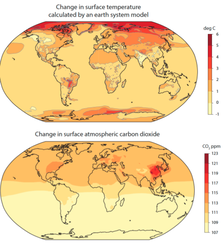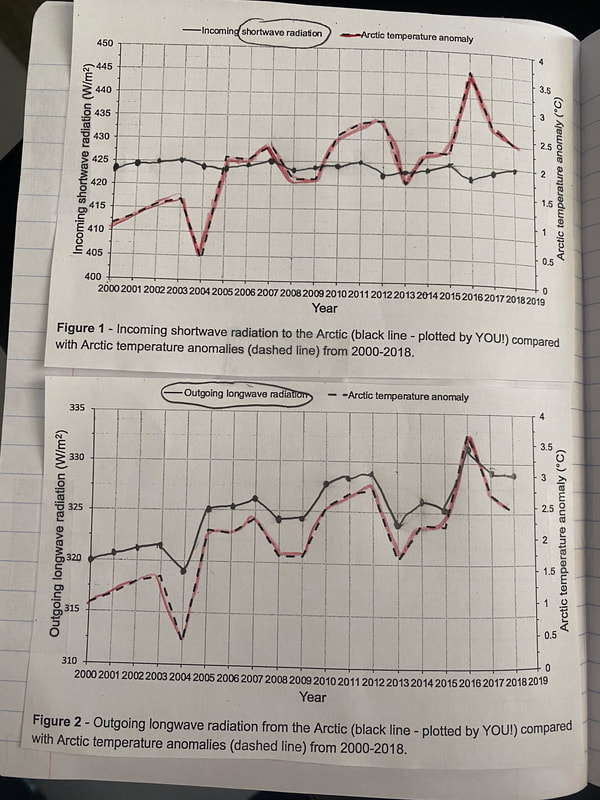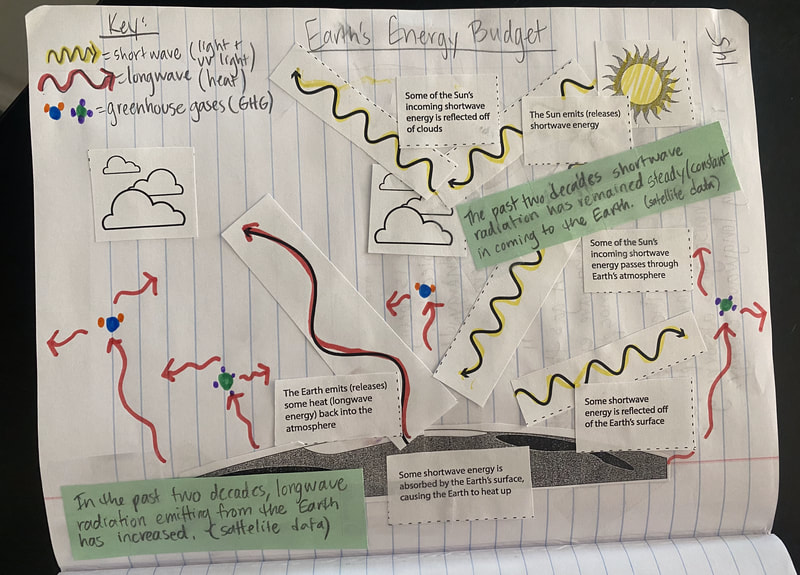| Recognizing that the surface temperature is changing most drastically in the Arctic, we looked to compare what's happening with surface CO2 levels. It looks like there's got to be more to this story since the biggest areas with CO2 surface levels are NOT in the Arctic. If greenhouse gases are to blame, they can't be the ONLY reason that the Arctic is warming twice as fast. |
With real data from the CERES satellites, students interpreted and graphed incoming shortwave radiation vs. longwave radiation emitted from the Earth. The surprise wasn't totally shocking, but it's getting us thinking about how increased greenhouse gases cause air temperature to rise, which in effect, gets ice to melt. And melting ice exposes more of the ocean below it. We agreed that the incoming shortwave radiation has stayed fairly constant in the past two decades, while the longwave energy has certainly been increasing (alongside the temperature).
We've updated our Earth's Energy Budget Model and our Progress Tracker, too! Next steps: see how the ocean and ice deal with incoming shortwave energy! If this hasn't changed, how does the melting ice help increase longwave radiation?



 RSS Feed
RSS Feed